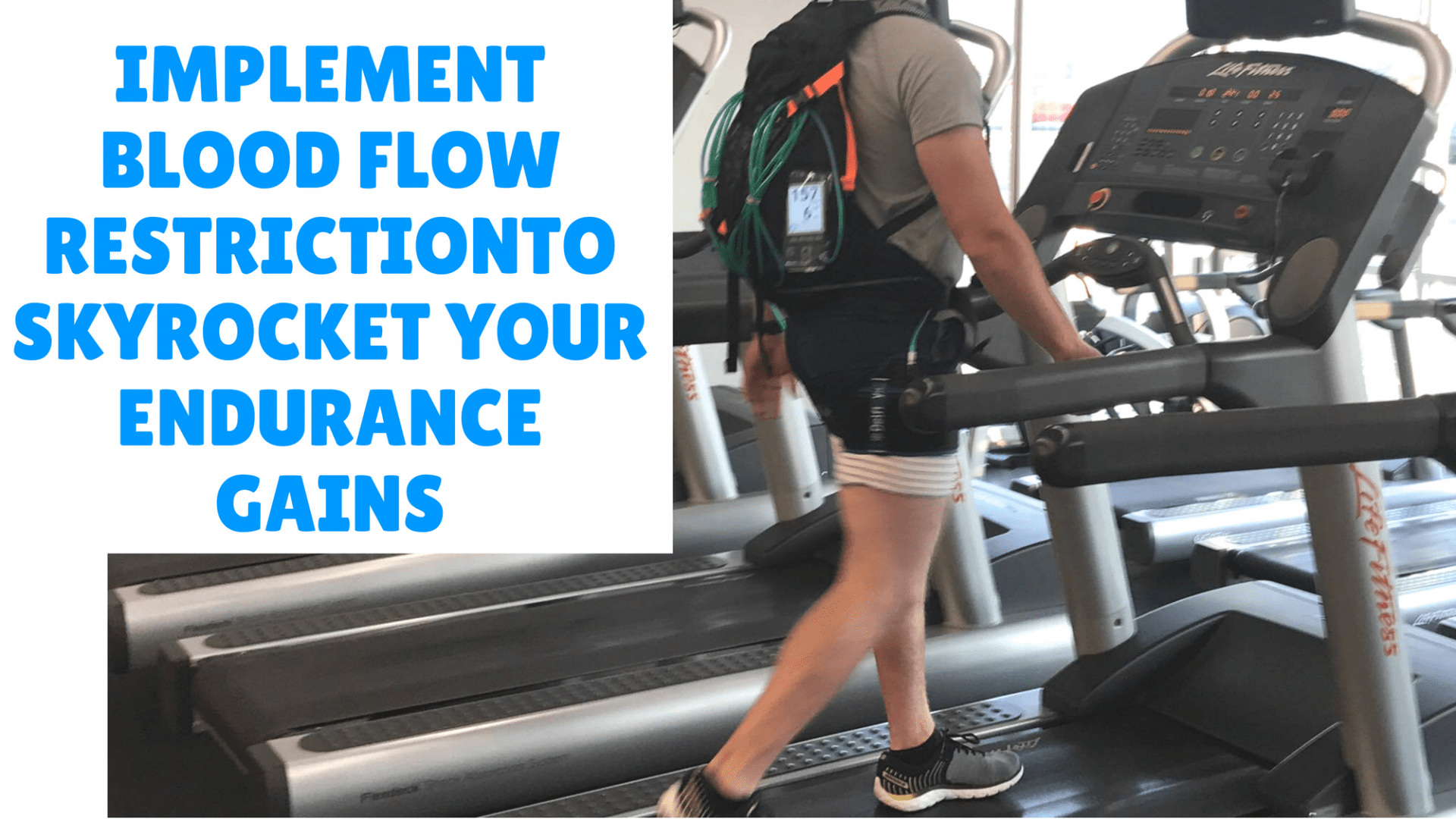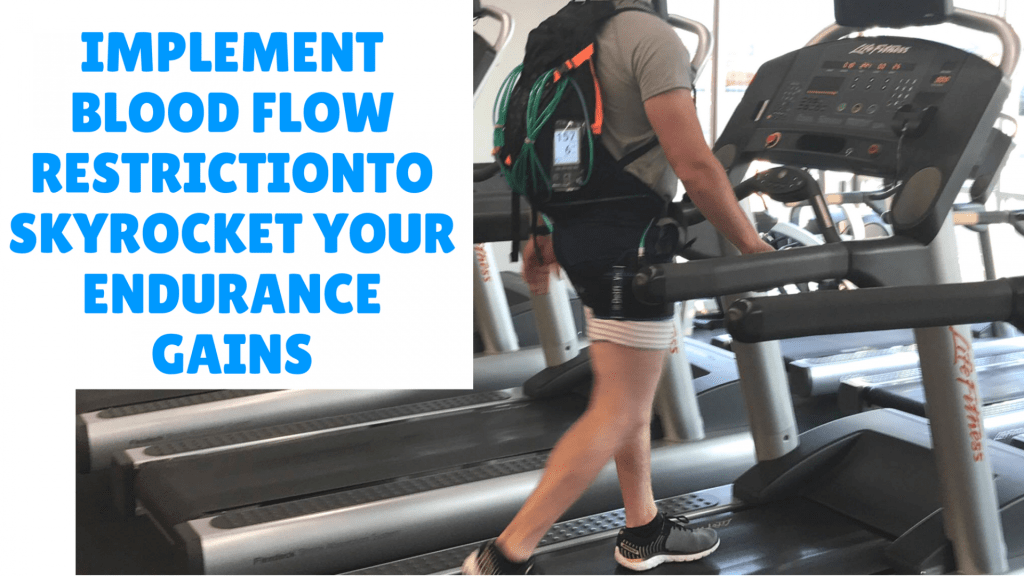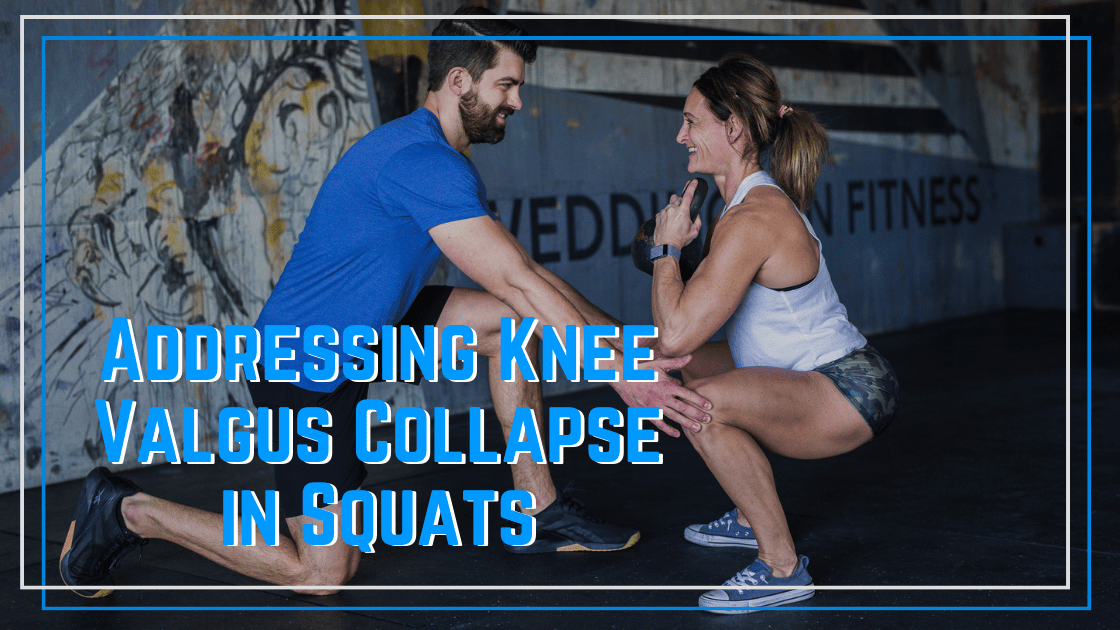Blood flow restriction training has recently emerged as a game-changer in the rehab and sports performance worlds. While typically strength & hypertrophy gains aren’t seen without lifting weights greater than 65% of an individual’s one-rep maximum, with blood flow restriction training (BFR) similar gains have been seen with loads as low as 20% of an individual’s 1RM! Even more impressive to me is the research related to blood flow restriction training for endurance gains.
There have been several studies that found positive benefits of BFR during endurance activities, but we will focus on three.
Blood Flow Restriction Training for Endurance
Before proceeding further with BFR, be sure to check out previous articles I’ve written on this topic:
The Science of BFR — Application of BFR —The Best BFR Devices
Note: Thanks to ProActive Health and LiftersClinic.com for images and video in this article
CYCLING (Abe 2010)
This 2010 study compared BFR cycling for 15 minutes at 40% VO2max to another group that biked at 40% VO2max for 45 minutes. Both groups performed the exercise routine three times per week for eight weeks.
The group that did BFR saw the following effects (not seen in the control group):
- Increased quad and thigh muscle volume
- Increased knee extension strength
- VO2max increased 6.4%
- Increase in exercise time to exhaustion
View this post on Instagram
WALKING STUDIES
Two studies have examined the effects of walking with blood flow restriction on endurance activities. Park 2010 had highly trained college basketball players walk for 3 minutes, rest one minute, and performed five total rounds with BFR. They performed two sessions of this daily for six days per week, for two weeks (12 total sessions).
After just two weeks, the BFR group had an 11.6% increase in their VO2max!
View this post on Instagram
Another recent study (not yet published but abstract presented) had para jumpers walk on a treadmill with BFR (Ursprung & Smith). If you’re not familiar with parajumpers, they are special ops medics. In other words, they are ridiculously fit athletes.
The parajumpers performed a 20-minute walk three times per week for five weeks. During each walk they started with a 1% grade and increased 1% every 4 minutes up to a 5% grade.
After the study, the para jumpers had significant increases in their VO2max and thigh muscle cross-sectional area (hypertrophy) as well as a significant decrease in their 1.5-mile run time. The exact numbers have not been released, but given how highly trained these subjects are, having statistically significant changes in these variables is VERY impressive.
Cycling and walking aren’t the only options for BFR, pretty much any endurance activity will work.
View this post on Instagram
Park, S., Kim, J.K., Choi, H.M., Kim, H.G., Beekley, M.D., and Nho, H. (2010) Increase in maximal oxygen uptake following 2-week walk training with blood flow occlusion in athletes. European Journal of Applied Physiology 109, 591-600.
Abe, T., Fujita, S., Nakajima, T., Sakamaki, M., Ozaki, H., Ogasawara, R., Ishii, N. (2010). Effects of Low-Intensity Cycle Training with Restricted Leg Blood Flow on Thigh Muscle Volume and VO2MAX in Young Men. J Sports Sci Med, 9 (3), 452-458.







